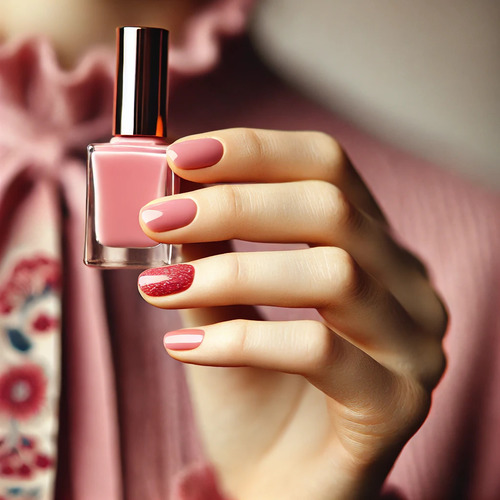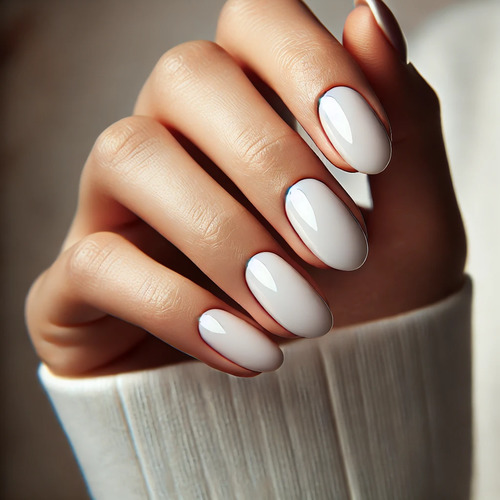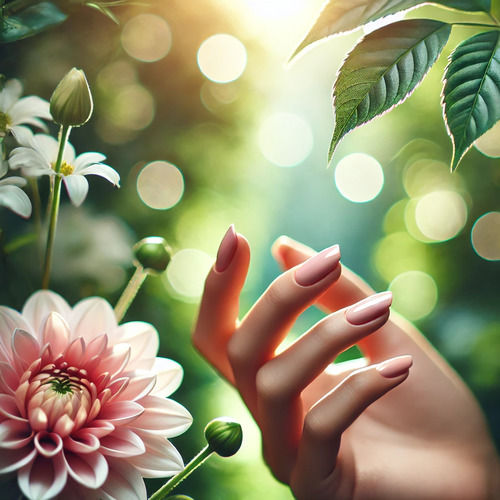Nail care is surrounded by many myths, some of which are widely known, while others are less popular. These misconceptions have become so widespread that it can be difficult to distinguish truth from fiction. However, as in any other area of personal hygiene, it’s important to rely on trusted sources and avoid the influence of dubious information.
Today, we will break down the most common nail myths and explain why they are not true. It's time to leave behind old misconceptions and truly understand what is important for the health and beauty of nails. Let’s begin!
1. Nails need to "breathe"
Nails do not need external air supply because they do not have lungs. All the necessary substances for forming new nail plate cells come exclusively through the bloodstream. Oxygen and nutrients required for growth are delivered directly through the blood. Therefore, maintaining healthy nails relies only on normal blood circulation.
2. Nails need to "rest" from polish
Nails do not require "breathing," so refraining from polish does not significantly affect their health. However, there is an exception: if there are signs of damage, infection, or an allergic reaction on the nail plate or surrounding skin, it is recommended to temporarily avoid applying polish and consult a doctor. A specialist will assess the condition, make an accurate diagnosis, and suggest necessary treatment.
3. Gel is considered better than acrylic
These products are identical in composition and differ only in the method of polymerization. Both options are safe when following the manufacturer's instructions and proper care. With careful application and removal, they will not harm the health of the natural nail.
4. Gel, acrylic, and powder can affect the health of nails
All nail materials are safe if applied and removed correctly. However, if, after removing the coating, the nail plate becomes thinner than in the area of growth, this may indicate excessive use of the drill by the technician. Such a situation is possible in any salon, regardless of its price range. It is very important that the procedures are performed carefully and professionally to maintain nail health.
After removing acrylic and gel, it is quite normal for nails to seem more flexible. This is because the coating "seals" moisture in the nails, and under the layer of polish, the nail cells contain 10-15% more water than usual. If a new coating is not applied, this effect disappears within 12-24 hours as the water molecules gradually evaporate.
5. Due to the use of certain medications, nail polish doesn't last long
There is a connection between the use of certain medications and the durability of a manicure, but this connection is not a direct cause-and-effect relationship. Long-term use of medications is important for treating various diseases, which can, in turn, affect the condition of the nails. The more the health suffers, the faster the polish may peel off, as changes in the body are reflected in the appearance of the nails.
6. If you apply oil to freshly painted nails, the polish may start to peel off
If the technician works carelessly, areas of peeling may appear between the gel polish or acrylic layer and the nail, and oil can worsen this problem if it gets into those spots. However, with proper application of the polish or acrylic, no products will seep underneath. In this case, the nail will remain protected, and the manicure will last without issues.
7. There is no risk of infection when using your own tools
It is important not only to consider how many people have used the tongs during the day, but also how they were maintained. Be sure to wash the tools with hot water and soap after each use, and then disinfect them. For this, you can either dip the tongs in a disinfectant solution or wipe them with alcohol to eliminate the risk of infection.
8. Cold water will help nail polish dry faster
The fastest way to ruin a fresh manicure is to dip your nails in cold water. Traditional nail polish dries by the evaporation of the solvents in its formula. When the polish comes into contact with liquid, this process slows down, preventing proper drying and potentially causing the polish to smudge.
9. To strengthen nails, it is necessary to eat gelatin
Unfortunately, there is no magic remedy that can transform nails overnight. To achieve strong and healthy nails, it is necessary to follow a balanced diet rich in all the essential nutrients: proteins, healthy fats, whole foods, fruits, and vegetables. The good news is that proper nutrition not only improves the condition of your nails but also contributes to overall health improvement!



